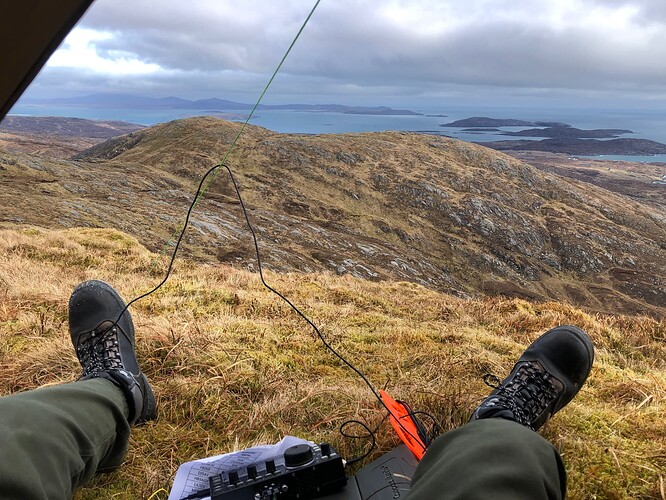Hi All. I see there are several past threads on the reflector about the use of frequency ‘zero beating’. Those threads are a while back, so thought it might be useful to raise the topic again.
As a CW SOTA activator, we are often blessed with mini pile-ups of callers. If two or more callers are exactly on the same frequency, the CW dits and dahs are undecipherable. Experienced CW chasers deliberately TX with an offset of somewhere around +/-70 to 140Hz. To an activator, these lower or higher-pitched dits and dahs shine out of the cacophony. They are using their XIT (transmitter incremental tuning) on their transceivers to set the deliberate frequency offset.
Now, if everone was to use XIT offset, the advantage would disappear, so maybe just keep it to yourself and try it next time 
 .
.
Best 73
Carl
G0KPE
“hush!” you don’t have to tell everyone 

As long as everyone uses a different offset it will work fine.
But, don’t offset too far. On my last activation I was called by an S2S but he was quite a bit off my frequency and so was weak thanks to my CW filter. He then got obliterated by another station nearer to my frequency. I know RIT is the solution except my rig doesn’t have that.
I use transceivers that are quite narrow in recieve and also home built, this means that frequency calibration isn’t as good as it might be (although I built a GPS locked frequency counter last year, I’ve yet to use it to calibrate my rigs!).
Whilst I understand the principle, in my case I’ve often struggled because callers shift too far, and end up out of my passband. There’s RIT of course but I want to spend my time working QSOs, not button pushing and knob twiddling. I think call timing is probably a better weapon in the chaser’s arsenal.
73, Colin
Yeah, this. With something like a QCX on the summit, it’s all very well being a little off zero beat, but if you call 100 Hz away your signal will quite likely be at least 3dB down because of the audio filtering. If you’re calling off the zero-beat, please keep it within +/- 50 Hz.
If I’m using my KX3 the effect of the filtering may be asymmetric (at least partly because of my ears and my using a low sidetone frequency to keep it out of the notches in my ears), so 100 Hz one way may be only 3dB down, but 100 Hz the other way could effectively be 12dB or more down. If I’m not hearing you off-beat one way, try going the other…
Offset not required - I tend to tune to the lower frequency side of the signal anyway as I prefer to listen to a low tone, as my hearings upper response curve has dropped off in older age. Chasing is done mostly with a 600 Hz filter but 300 Hz and less (adjustable) is there if needed.
73 Phil
When it comes to chasing my side-tone’s set to around 400 Hz because some tones above about 550 Hz set my ears ringing (sort-of inverse of a notch, but has the same detrimental effect when it comes to trying to pick out the morse), and I usually use a filter width between 200 and 300 Hz, with the bottom of the filter around 250 Hz. There’s also the rig’s waterfall to show what might be going on outside the filter’s range, and the CW/CW-R toggle gets flipped when necessary, too…
[quote=“G4OBK, post:6, topic:28524”]
as my hearings upper response curve has dropped off in older age
Like many of a certain age, my hearing has dropped off for the highs. It is also explosive damaged from years ago. When chasing CW, my receiver filter width is set at 50 Hz. I use the XFC button to temporarily increase bandwidth and hear the other chasers.
This! Even if their signal is weaker compared to others, it sticks out clearly.
It pays off working with a wide IF-bandwidth as an activator. In a quiet environment (like a summit) 500 Hz shouldn’t be an issue - and you really get the chasers in the log quickly without having to wait for the pile-up to abate after every QSO.
73, Roman
